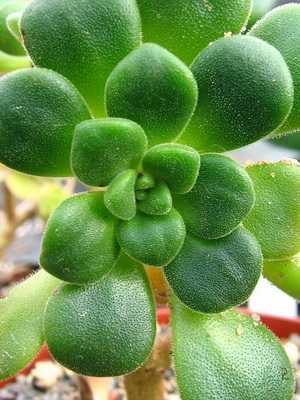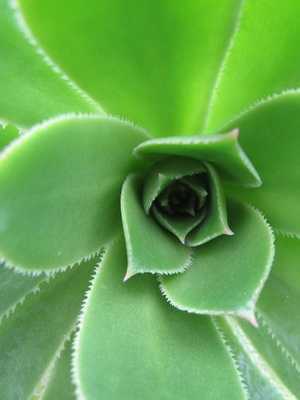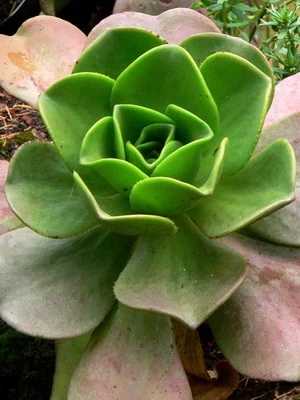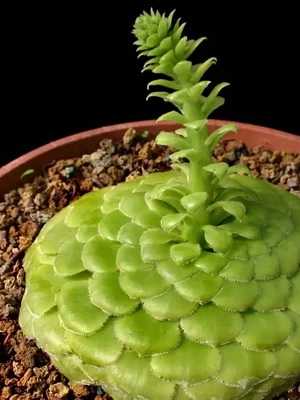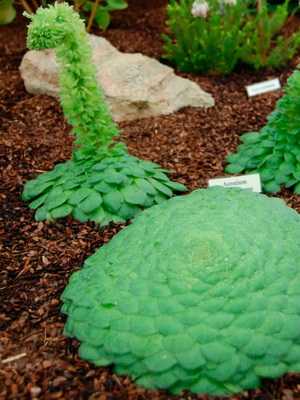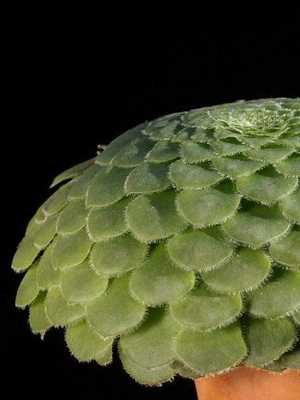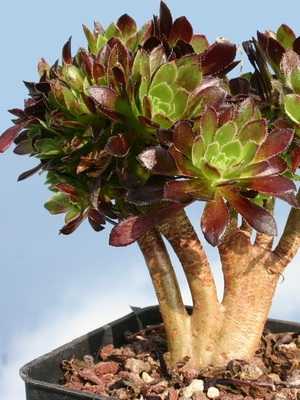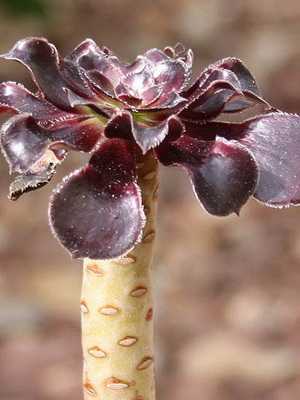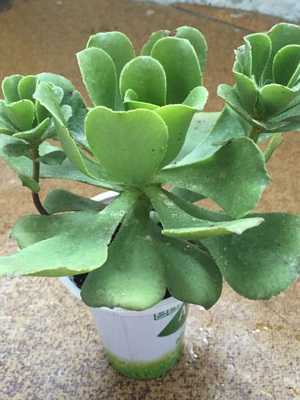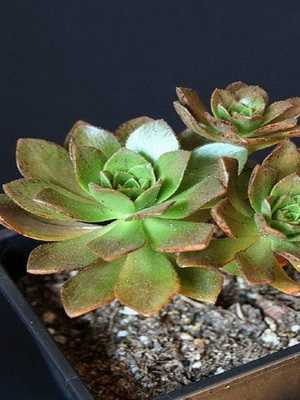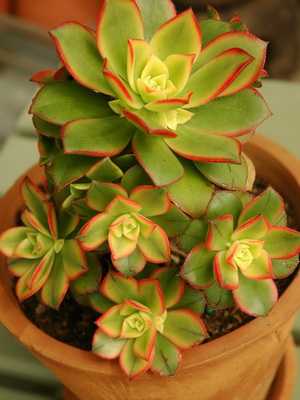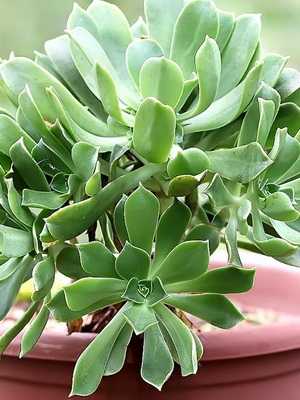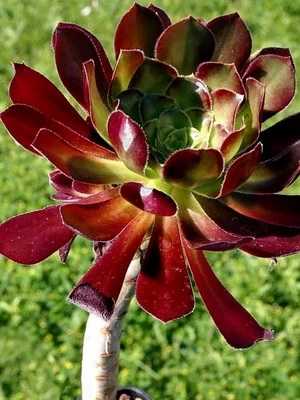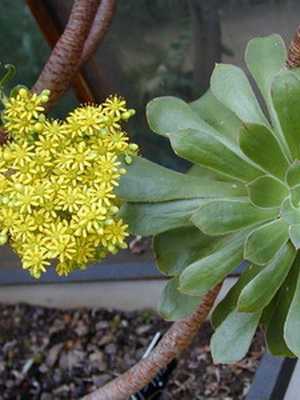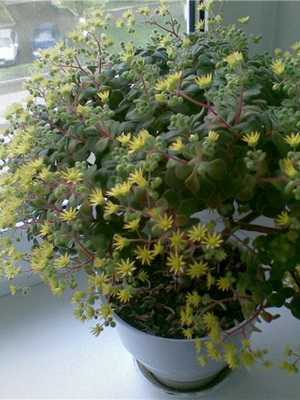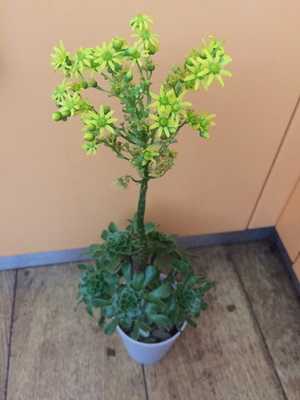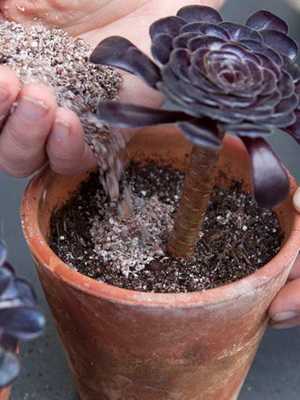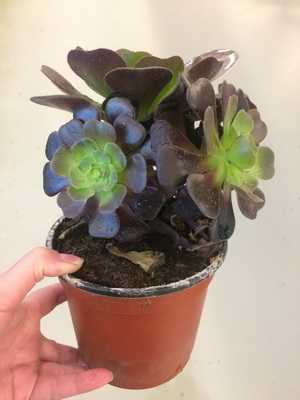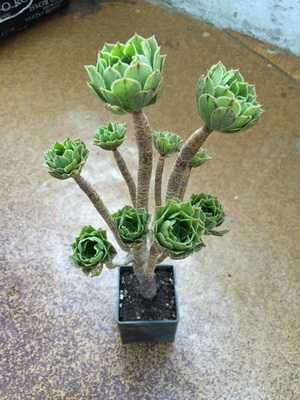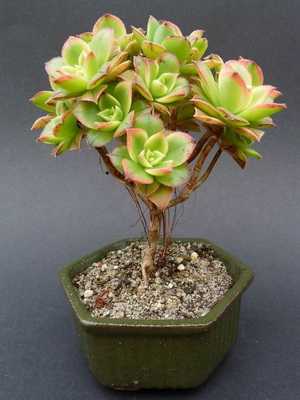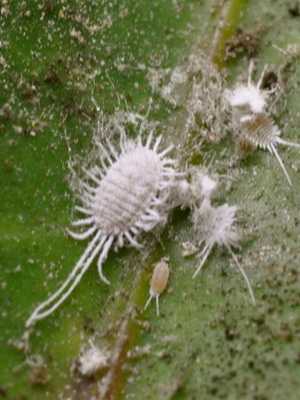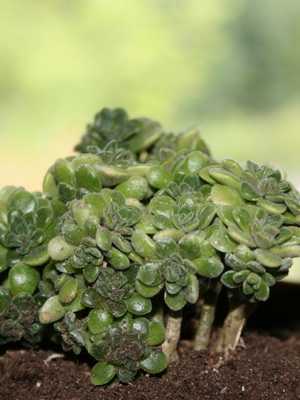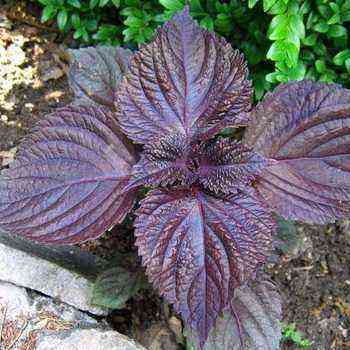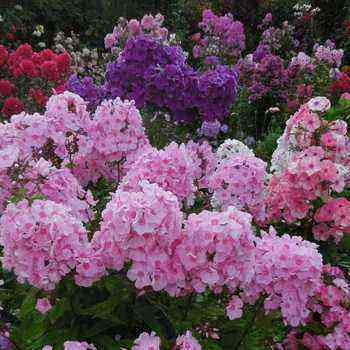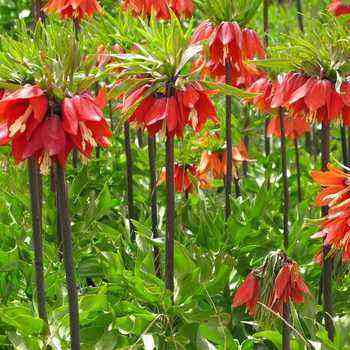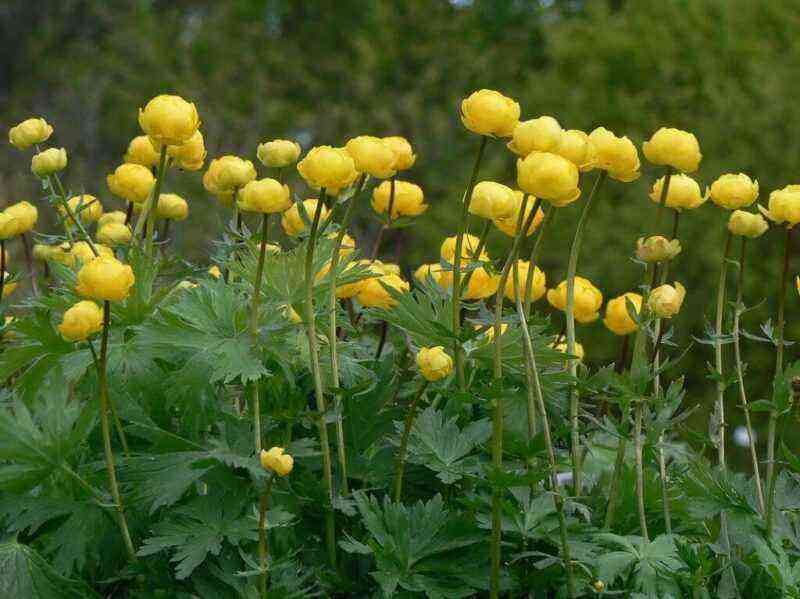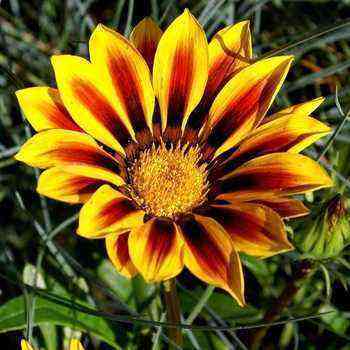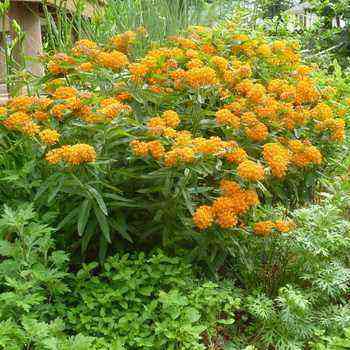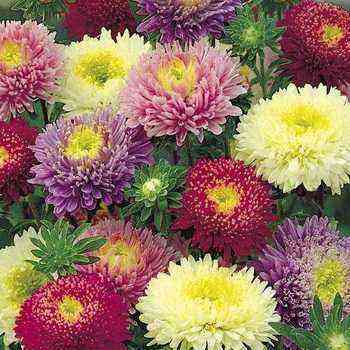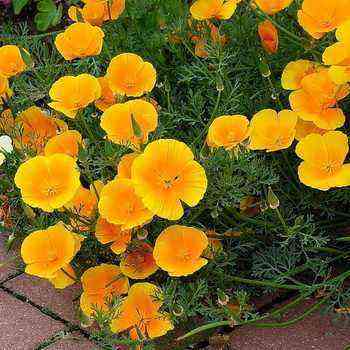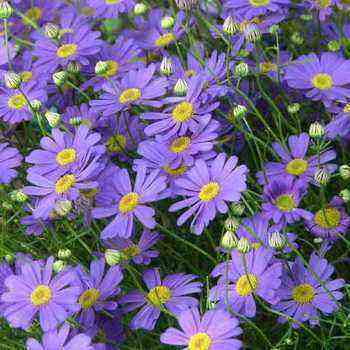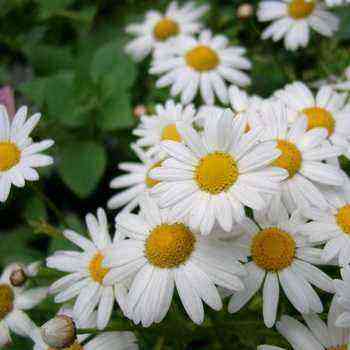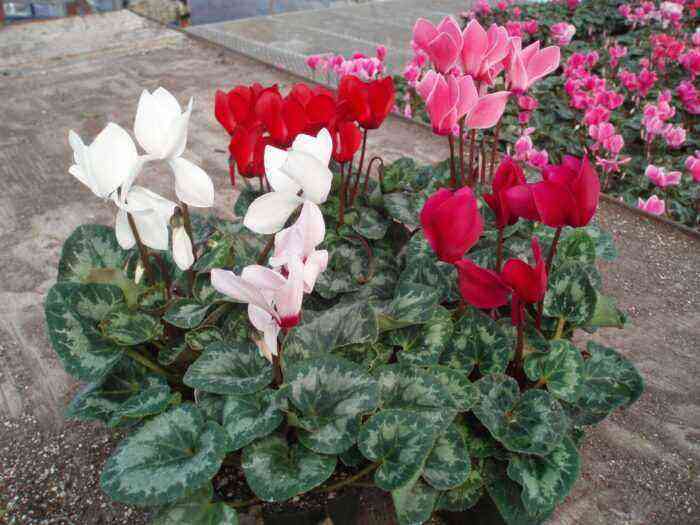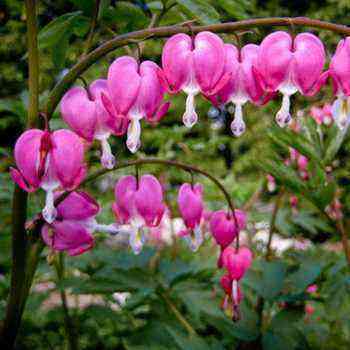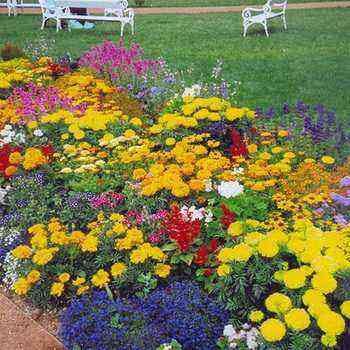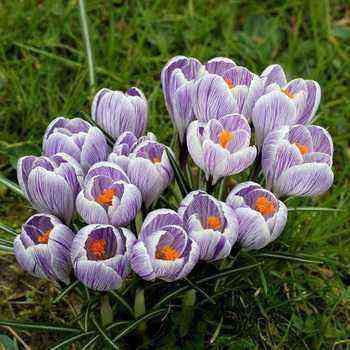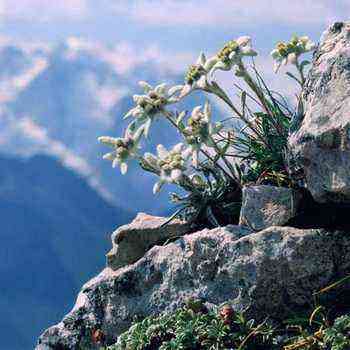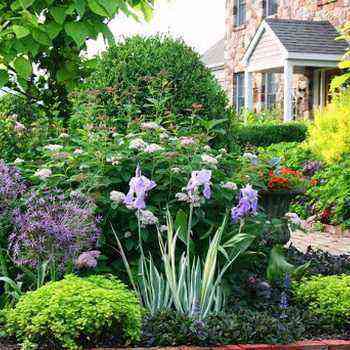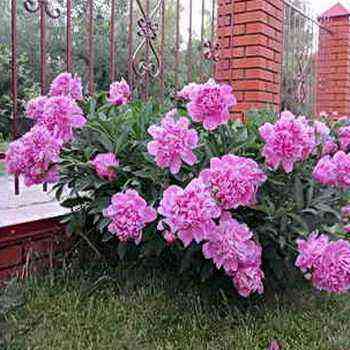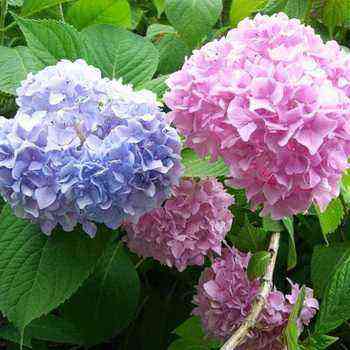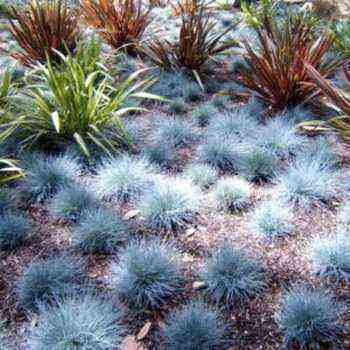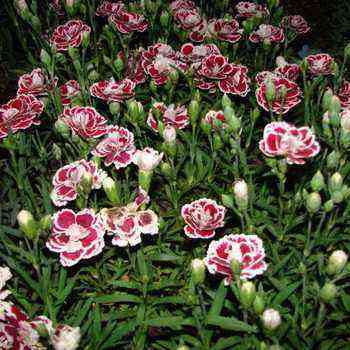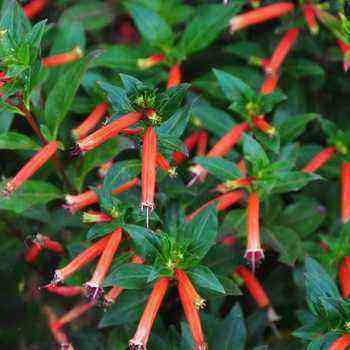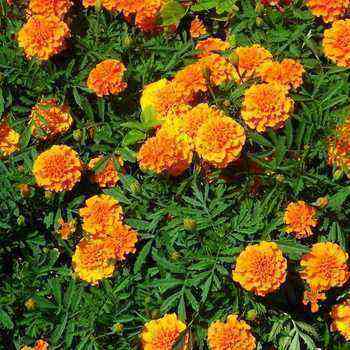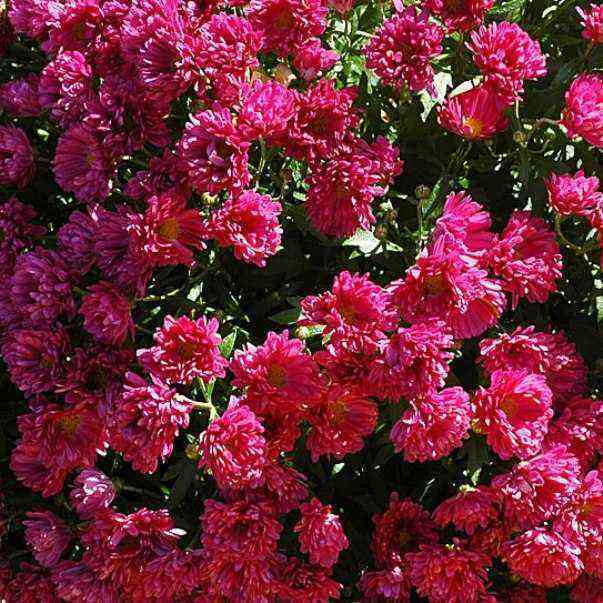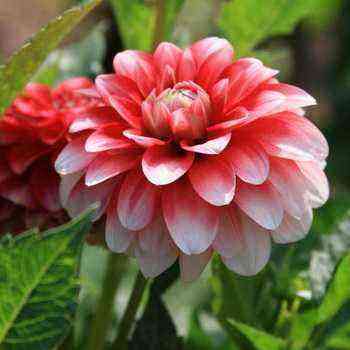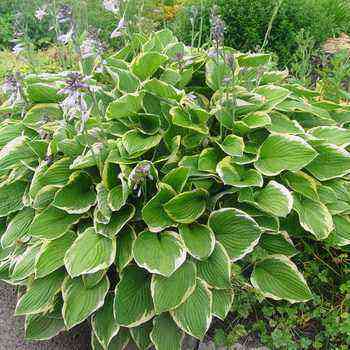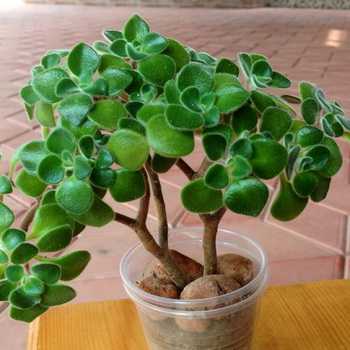
Homeland – Canary Islands, East Africa.
Translated into Russian it means “alive”, “eternal”. It is also called the “stone rose”. It is a herbaceous succulent decorative-leaved houseplant with a height of 5 to 30 cm or a shrub reaching a height of 1 m. Some species have branched shoots, and some are single. Leaves are fleshy, smooth; after they fall off, scars remain on the trunk.
Young stems are green, and over time they become lignified, covered with brown bark, aerial roots may appear on them.
Shoots can be branched or single. Leaves are petiolate, forming a rosette, similar to a flower on a thick stem. The color of the leaves is varied – green, purple-brown, bluish.
When the aeonium loses its leaves, scars form on the succulent’s trunk.
The flowers are small, but bright – white, yellow, pink or red. Formed in a pyramidal brush. True, at home, flowering is extremely rare.
A negative feature of the plant is that after the end of the flowering period, the stem on which the flower was located most often dies.
Types and varieties of succulent eonium: photo, name and description
This plant has 36 main species and 39 hybrid ones. In home floriculture, the following types of aeonium are popular:
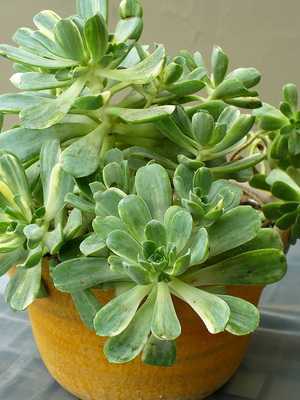
Aeonium home (A. domesticum).
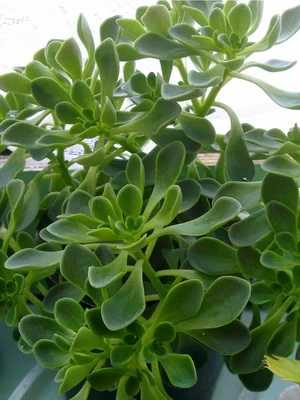
Aeonium noble (A.Nobile).
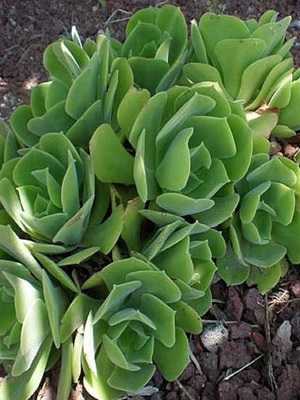
Eonium virginsky (A. Virgineum).

Aeonium tree (A. Arboreum).

Aeonium is tiered or disc-shaped (A. Tabuliforme).
Even more subspecies and varieties were obtained from them.
Take a look at the photo, which shows the types of aeonium with names that are most popular among gardeners:
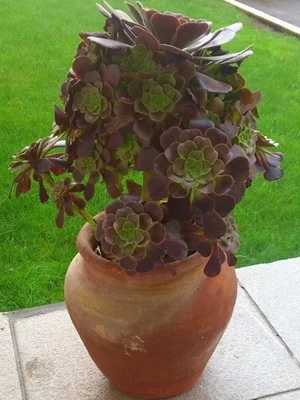
Aeonium tree (A. arboreum).

Aeonium canary (A. canariense).

Aeonium Lindley (A. lindleyi).
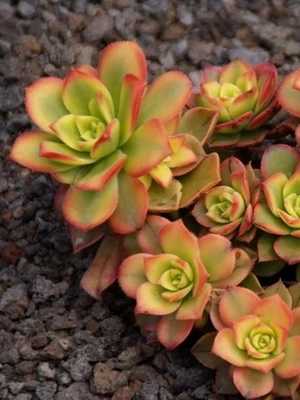
Eonium marble (A. marmoratus).
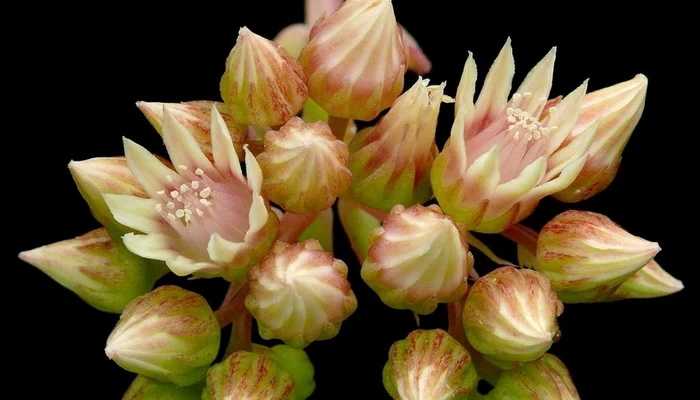
Eonium Havortsa (A. haworthii).
For example, the domestic species of aeonium is a branchy shrub that reaches 30 cm in height. Its trunk is covered with brown bark, leaves are dark green, wide, blooms with yellow flowers.
Most often represented by the fleshy variety “Kiwi” (Aeonium percarneum cv. “Kiwi”), which has a rather interesting color. The edge of the foliage is framed with a red border, the core is bright green in color. Young foliage has a yellow tint.
Aeonium noble is a species that has a short stem, which makes it seem like a rosette of leaves is lying on the ground. Flowering lasts an average of 1.5 months. The flowers of this succulent have a pleasant, rather tangible aroma.
Virginia aeonium is a perennial species that has a short, almost invisible stem; leaf rosettes are shaped like openwork pillows. Leaves are silvery green, pink at the base. In natural conditions, the plant reaches 1 m in length.
Aeonium tiered or disc-shaped is a species that is striking in its shape, since its leaves are formed into a large flat rosette, resembling a plate in appearance. Sometimes the diameter of the rosette reaches half a meter.
The photo below shows a disc-shaped aeonium:
A feature of the species is that the plant blooms in the second year of life and then dies off. The leaves are framed with villi and are pale green in color. Flowers – with a yellowish tinge. The maximum height of the disc eonium is 10 cm. The leaves are arranged like a tile.
The most striking is the arboreal aeonium , which is an erect shrub with shiny leaf plates tightly pressed against each other. The leaves are rosette at the very ends of the shoots, thereby resembling bizarre flowers.
The most spectacular representative of the species is the Eonium Schwarzkopf or Black Rose.
The next photo shows that the aeonium Schwarzkopf resembles an exotic flower:
It has dark, almost black leaves, which give off green at the base, thereby creating the effect of the core of the flower.
Another interesting variety of the tree-like aeonium is called Green Rose Buds . This is a small shrub, on which up to 50 bright green large rosettes are formed.
Grade Eonium “Sunbeams” has dense leafy rosettes, green leaves in the center and lemon at the edges.
The plant variety “Du Rozzen” forms loose leaf rosettes. Its young leaves are deep green in color, and over time they acquire a purple color.
Eonium Canary is a shrub with a little branched, short and thick trunk. An adult plant rarely grows above 30 cm in height.
Proper care of aeonium plant
Eonium grows mainly in the Mediterranean, so it is a warm and light-loving plant. Lighting should be bright, but diffused, direct sunlight should be avoided, especially in summer, they can cause burns on the leaves.
When caring for aeonium at home, even in winter, the air temperature in the room should not be lower than 10-12 ° C.
The plant does not require high humidity, it can do without spraying.
Watering aeonium is moderate, the plant does not like waterlogging. The top layer of the soil should have time to dry. The water from the sump must be drained to avoid root rot. Bottom watering is strictly prohibited.
The water should be soft, settled. It is important to avoid getting liquid on the leaves, otherwise they may rot.
Take a look at the bloom of aeonium with proper care in the photo:
At home, the plant blooms extremely rarely, it takes an effort to get beautiful buds. But having achieved a positive result, the owner of the flower will be able to enjoy the beauty of the inflorescences for a long time.
From the middle of summer, in July – August, watering is reduced. There is a simple method for determining if the soil needs to be moistened. This requires squeezing any leaf at the point of growth. If it is elastic, then the plant does not need watering, but when the structure is soft, the soil should be moistened.
A young plant is transplanted annually, it is best to carry it out in April – May. After the onset of the growing phase of the flower, at the age of 4-5 years, the eonium can be transplanted every 3 years.
The transplant is easy, as a rule, it does not cause any difficulties. The main thing to remember is that succulent roots are very afraid of moisture. It is highly discouraged to water the plant heavily when transplanting. The substrate is prepared from leafy and sod land, sand (1: 1: 1). You also need to worry about the drainage layer, which should be 1/3 of the pot. Expanded clay is best used as drainage.
From spring to the end of summer, aeoniums enter the phase of active growth and flowering. During this period, it is necessary to introduce fertilizers into the soil twice a month. Top dressing for cacti (succulents) is perfect. Winter is a dormant period, so it is better to completely stop any manipulations with feeding.
Look at the photo of what the eonium looks like at home during the rest period:
In winter, the plant needs minimal care, the main thing is to keep it away from heating radiators, otherwise the distance between the leaves will be greatly increased.
Eonium is an unpretentious plant, but sometimes troubles with pests can arise. The plant can infect: nematode, mealybug, scale insect and false scale insect.
Mealybug is a dangerous pest that settles between the leaves of the rosette.
What the eonium flower damaged by this parasite looks like can be seen in the photo, and a description of the pest control measures is given below:
An emergency treatment is to wipe the leaves of the affected flower with a sponge dipped in soapy water or rubbing alcohol.
If there are too many pests, chemicals such as Confidor, Aktara, Aktellik or Karbofos can be used. Excessive use of them can harm the plant, so you need to strictly adhere to the instructions.
Eonium breeding methods
There are two ways to breed aeonium:
- Apical rosette, dried stem cuttings.
- A. arboreum can also be propagated by seeds.
In the period from April to July, vegetative propagation of aeonium can be carried out. In order for the cuttings to root better, it is worth preparing them until the moment when the plant enters the flowering phase.
For propagation of the eonium plant by cuttings, it is necessary:
- Use soil suitable for planting adult succulents (cacti).
- Provide diffused light to the sprouts.
- Maintain the room temperature at 20-25 degrees.
- Watering the flower after transplanting should be done only when the earthen lump dries up.
If all the rules are followed, the cutting should take root within 12-15 days.
When a plant is propagated by seeds, it is worth knowing that after ripening, the seeds retain their germination for 4-5 years. They will retain their properties for such a long period if stored in the refrigerator.
The following photo shows a home aeonium planted from seed in late summer:
When planting, the seeds are simply spread on moist soil, without sprinkling them with earth. For proper development, you will need to cover the seeds with foil.
In order for the seeds to sprout, it will be necessary:
- Create the highest possible humidity.
- Make sure that the soil does not dry out completely.
- Maintain the room temperature at 18-20 degrees.
- Protect from direct sunlight.
The most common reason seeds do not want to develop is due to increased ambient temperatures.


